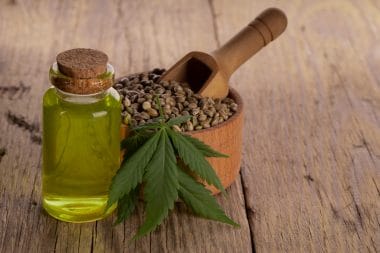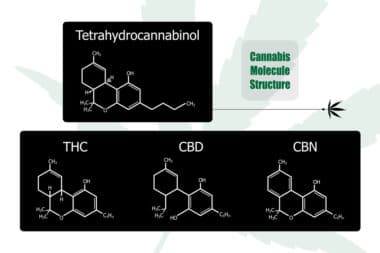Carl Esprey, CEO of Botanical Holdings, explains the basics of CBD, cannabinoid extracts and concentrates, and the currently approved uses of cannabis for medical conditions.
Cannabis, also known as marijuana, is a plant of the Cannabaceae family. It contains about a hundred biologically active chemical compounds called cannabinoids. The most known cannabinoids are cannabidiol (CBD) and delta-9-tetrahydrocannabinol (THC). These are the main compounds used for managing medical conditions.
Recreational marijuana on the other hand is chiefly THC, which produces the psychoactive ‘high’ people experience when they ingest it.
So how are extracts and concentrates derived from the cannabis plant?
Parts of the cannabis plant are processed into extracts or concentrates that are then used for cannabis-based products. There are two main methods for creating cannabinoid extracts or concentrates from the plant – solvent-based and solventless extraction.
- Solvent-based extraction – uses volatile chemicals like hydrocarbons, alcohol, or CO2 to dissolve the trichomes (epidermal outgrowths) in the plant material. Once you remove the solvent, the residual extract is in the form of shatter, wax or vape oil. The main advantage of this method is that it can produce specific cannabinoids that have specific effects, e.g., CBD for relaxation.
- Solventless extraction – or mechanical extraction, as the name suggests, does not use chemical solvents. The trichomes are either beaten, rubbed, or pressed from the plants, which produces a concentrate like kief, hash, or rosin. The main advantage of this method is that more of the original cannabinoids are left intact and free of chemicals.
Which are the main types of cannabis extracts and concentrates?
- Cannabis Oils – are the natural oils extracted from the leaves, buds, or seeds of the cannabis plant. These may be obtained either through solvent-based extraction or by pressing. Common types of cannabis oil include Rick Simpson Oil (RSO), Phoenix Tears, vapourizer oil, edible oil, etc.
- Butane Hash Oil – is a potent cannabis concentrate with THC content as high as 80-90%, made using butane as the main solvent. Terms like wax, budder, honeycomb, crumble, shatter, and sap refer to BHO with different consistencies. Wax/budder is a runny form of cannabis oil, while pie crust/honeycomb is crumblier and brittle. Shatter is even more brittle and has glass-like consistency.
- Kief – is the simplest of cannabis concentrates. It is the collection of resins and trichomes that crystallise naturally on the leaves and flowers of the plant. Kief can be run through a series of screens to retain only the trichome heads. This produces a non-solvent form of hash referred to as dry sift or dry sieve.
- Hash – is popular in cannabis culture around the world for its clean extraction process. It is produced by applying very light heat and very high pressure to kief. This preserves most of the terpenes and natural cannabinoids in the product. Ice water extraction can be used to produce bubble hash from kief. The ice knocks off the trichomes from the plant. The water bath is then drained and the trichomes are dried for about 24 hours before being pressed into pure hash.
- Rosin – is the solid form of cannabinoid resin that has been gaining a lot of traction in the CBD community in recent years. It is made by adding pressure and heat with a rosin press or heat press to vapourize volatile liquid terpenes without significantly altering the chemical profile. The process is quick, simple, and inexpensive.
These are the major types of cannabinoid extracts and concentrates, but there are many more types like moonrock, jelly hash, supercritical CO2 oil, as well as subtypes.
What symptoms and conditions can CBD help manage?
Researchers are studying the effect of cannabis in a wide number of medical conditions like Alzheimer’s, cancer, Crohn’s disease, autoimmune diseases, eating disorders, epilepsy, arthritis, glaucoma, chronic pain, and mental health conditions/psychotic disorders like PTSD and schizophrenia.
Experts acknowledge that while the benefits of CBD are not yet proven for many of these conditions, there is sufficient evidence supporting its therapeutic effects in conditions like chronic pain, seizures, muscle spasticity due to multiple sclerosis, and nausea due to chemotherapy.
Further research seems to suggest that cannabinoids might help manage anxiety and depression, reduce inflammation, slow tumour growth in cancer, restore normal sleep patterns, reduce pressure on the eyes in the treatment of glaucoma, and stimulate appetite in people with HIV/AIDS and cancer. Cannabinoids could also present a potential line of treatment in Coronavirus-related inflammation.
How does cannabis for medical conditions really work?
Medicinal cannabis works in much the same way as any other drug, whether prescription or OTC; that is, by modulating brain chemistry. This is possible because of cannabinoids that are similar to the chemicals present in our body that determine appetite, memory, movement, and pain response. Medical science is now learning to use cannabinoids to target and alleviate specific symptoms.
The human brain has an endocannabinoid system consisting of cannabinoid receptors and natural brain chemicals involved in different bodily functions. THC connects with these cannabinoid receptors and influences different physical outcomes based on the delivery system.
CBD, on the other hand, does not interact with the cannabinoid receptors but works with THC to heighten its therapeutic effects, such as by reducing pain and muscle spasms. By itself, CBD can act as an antioxidant, provide sedation, reduce inflammation, alleviate the severity of seizures, and protect parts of the nervous system.
What does the FDA say about the use of medicinal cannabis?
In the United States, CBD received a lot of attention a few years ago when the FDA approved the CBD medication Epidiolex ® for the treatment of Lennox-Gastaut syndrome and Dravet syndrome. Parents with children suffering from these severe seizure disorders had been long desperate for legal access to cannabis-based medicines.
Epidiolex was the first FDA-approved medication derived from cannabis. It is also approved for the treatment of seizures due to tuberous sclerosis in pediatric patients. Two other medications, Dronabinol and Nabilone, are FDA-approved for therapeutic use in the treatment of nausea due to chemotherapy and anorexia and weight loss due to HIV/AIDS. These contain synthetic versions of THC and are only available with a prescription from a licensed healthcare provider.
Where does the NHS stand on the use of medicinal cannabis?
Following in the footsteps of the US, the UK legalised medicinal cannabis in November 2018. Here, too, the development came in the aftermath of a media backlash surrounding a few pediatric cases of epilepsy where cannabis oil had proved beneficial. But the prescribing regime under the NHS continues to be severely restrictive.
In practice, the use of medicinal cannabis is permissible only for a few conditions, such as severe forms of childhood epilepsy, nausea caused by chemotherapy, and muscle spasticity due to multiple sclerosis. Medications other than Epidiolex, Sativex and Nabilone are ‘unlicensed specials’ that can only be prescribed by a specialist GP and supplied by pharmacies with special licenses.
The 2019 NICE guidelines were also restrained in their support of CBMPs, and most NHS trusts won’t prescribe outside them. The guidelines specifically recommended against prescribing CBMPs for chronic pain in adults outside clinical trials. Meanwhile, the OTC market for CBD oils is flourishing. These are currently sold as supplements and are not counted as CBMPs. Estimates suggest that the UK market for CBD oil could be worth almost £1bn by 2025.
According to the Centre for Medicinal Cannabis (CMC), the UK cannabis market has an evolved regulatory framework for CBD and other consumer cannabis extracts, but there is a need for better government intervention and investment to fast-track its part in the global cannabis revolution.








Reply